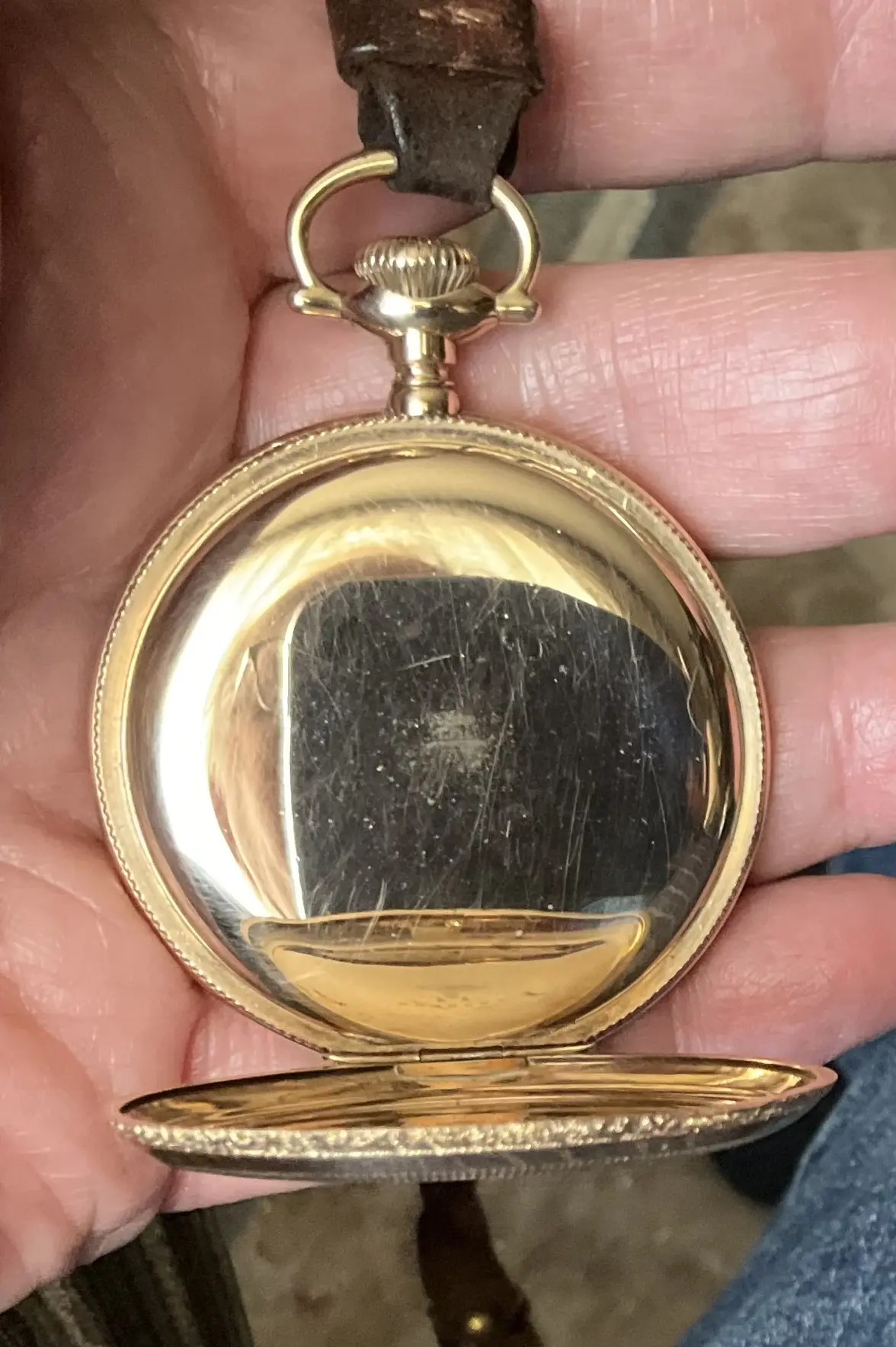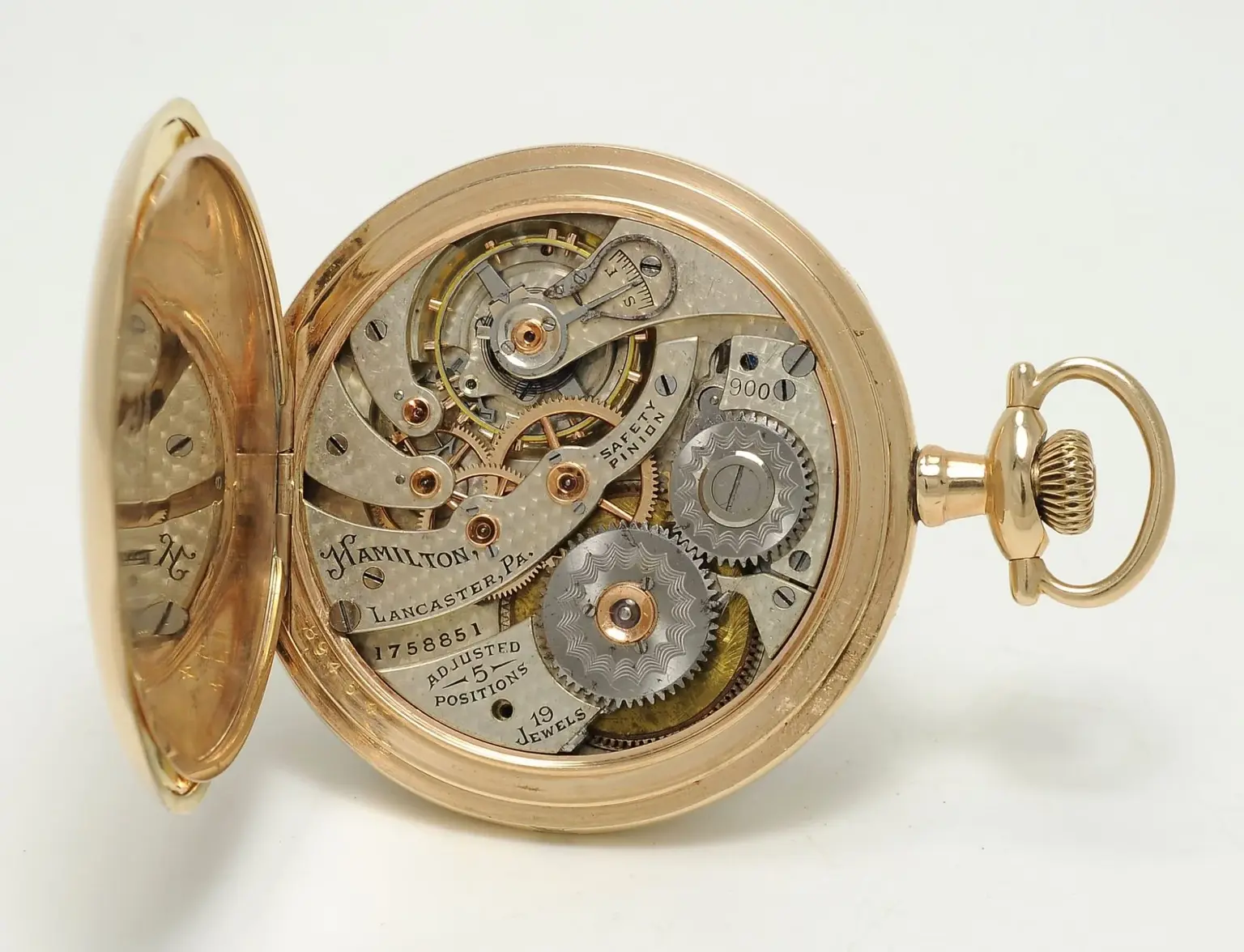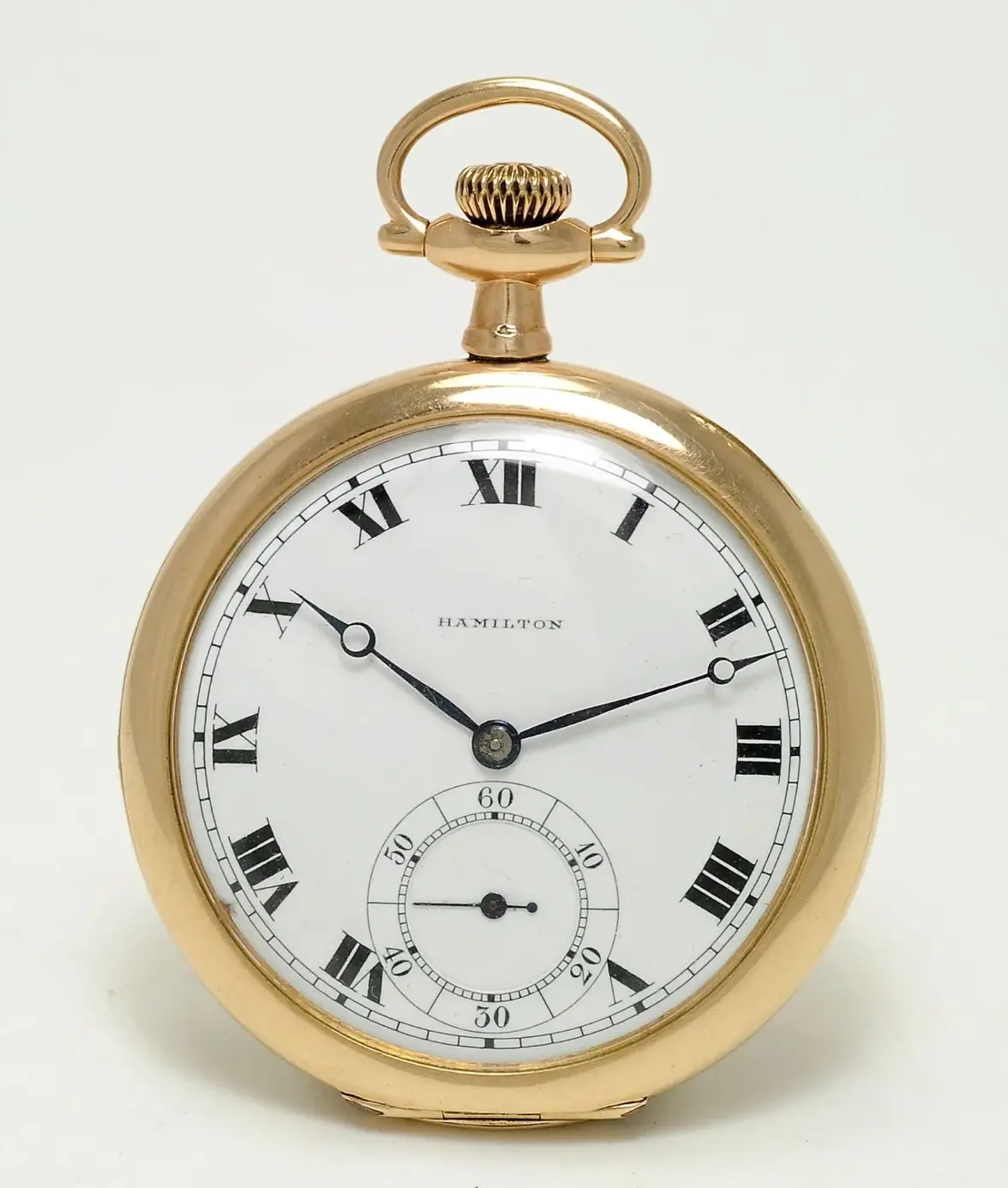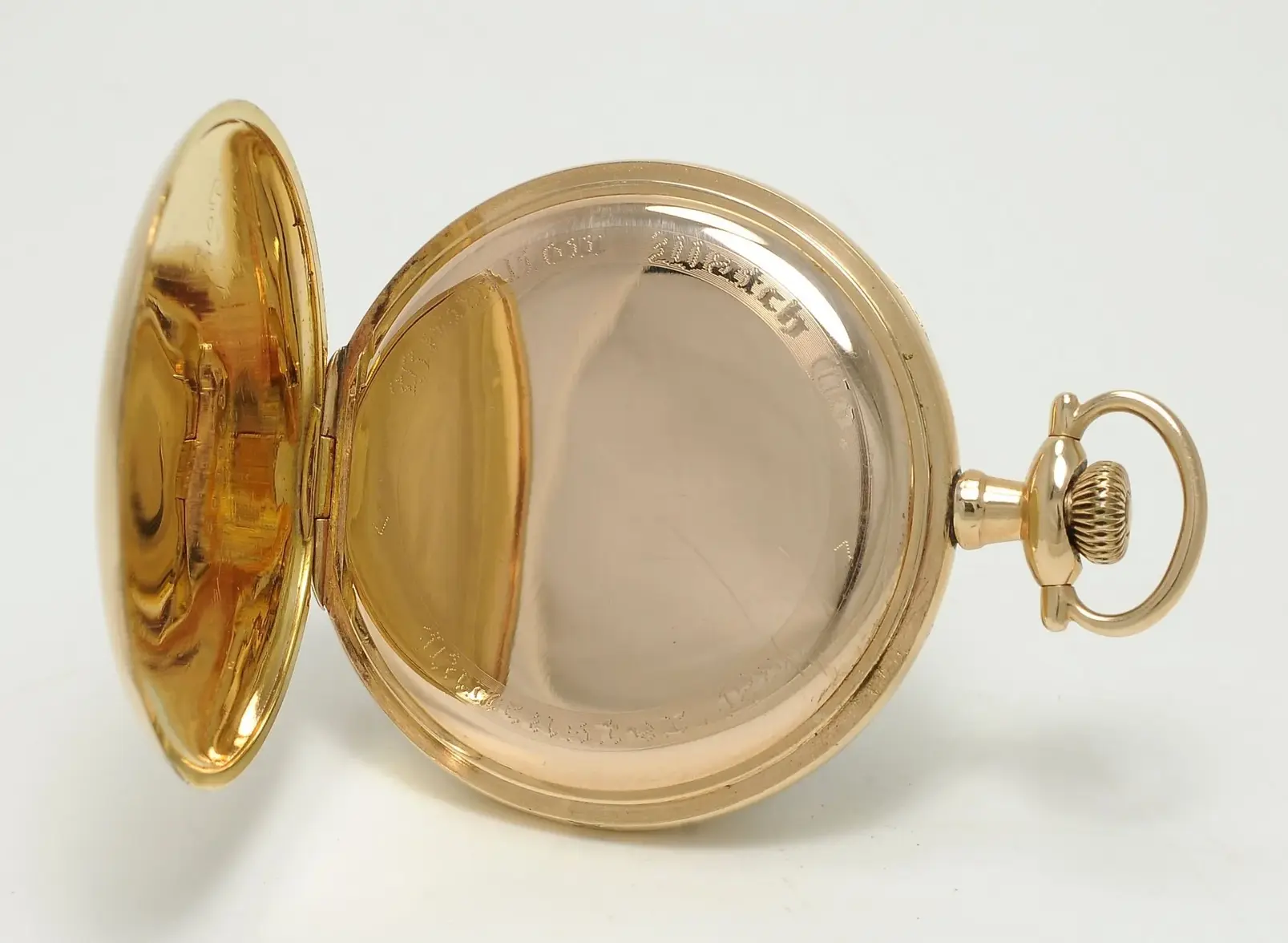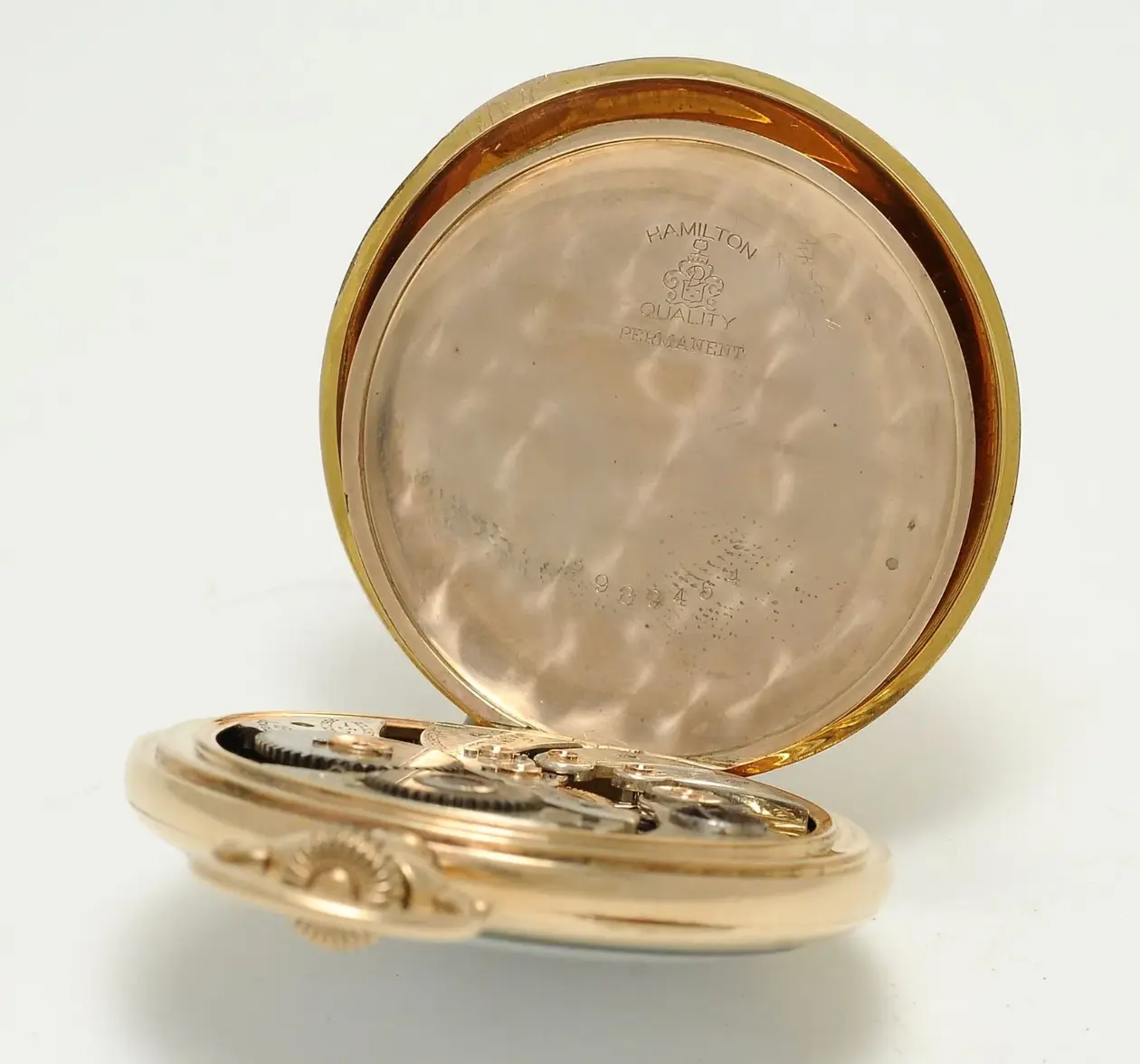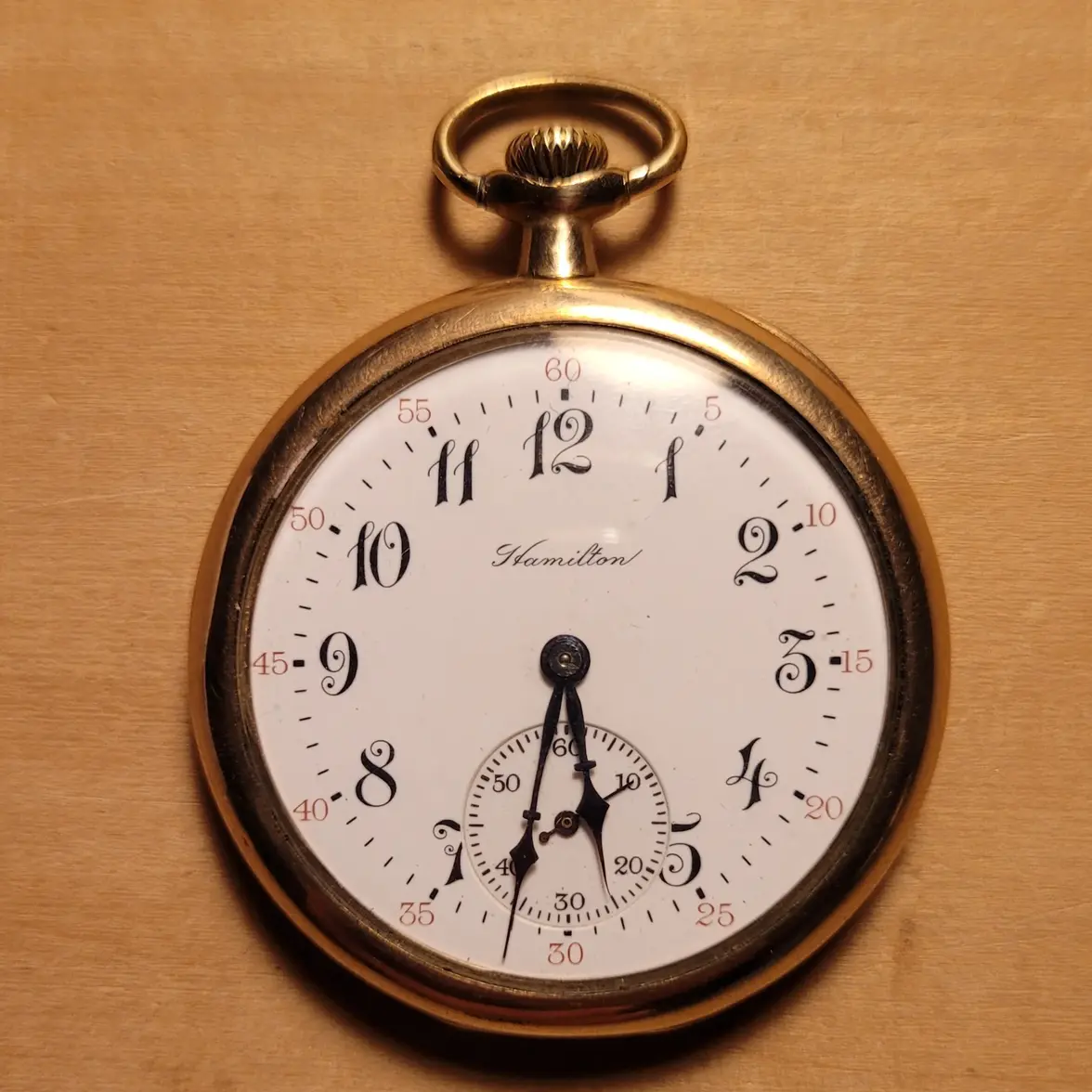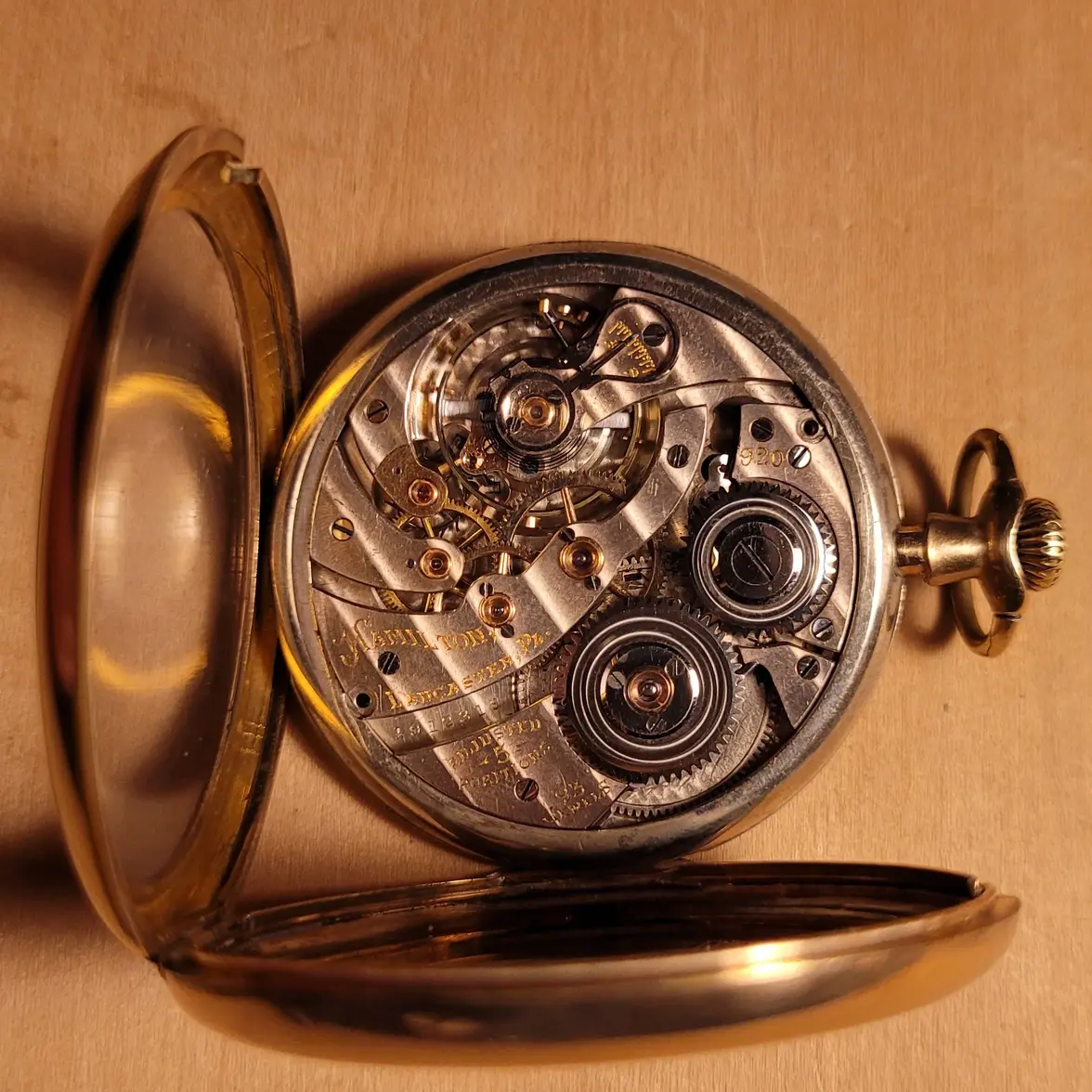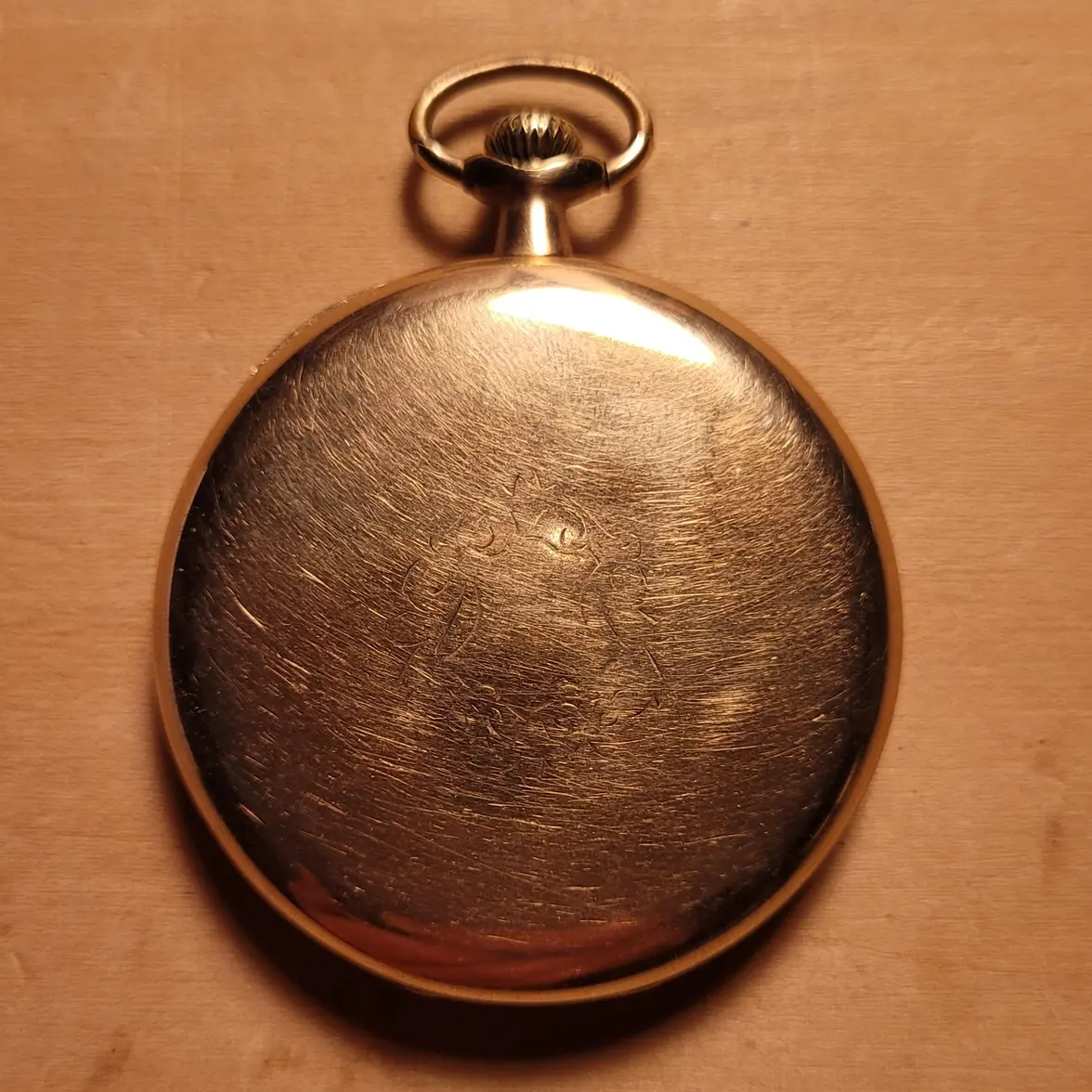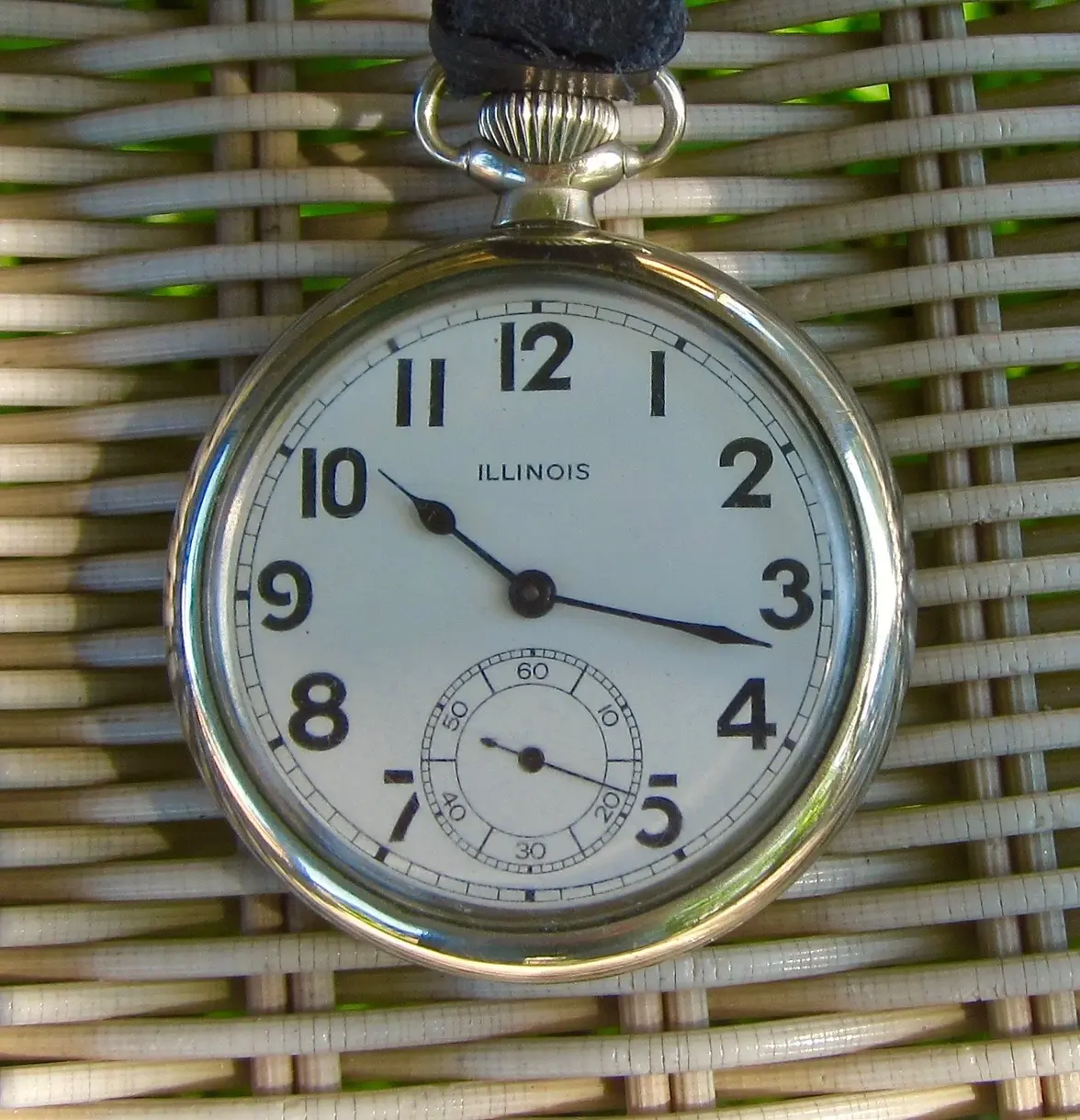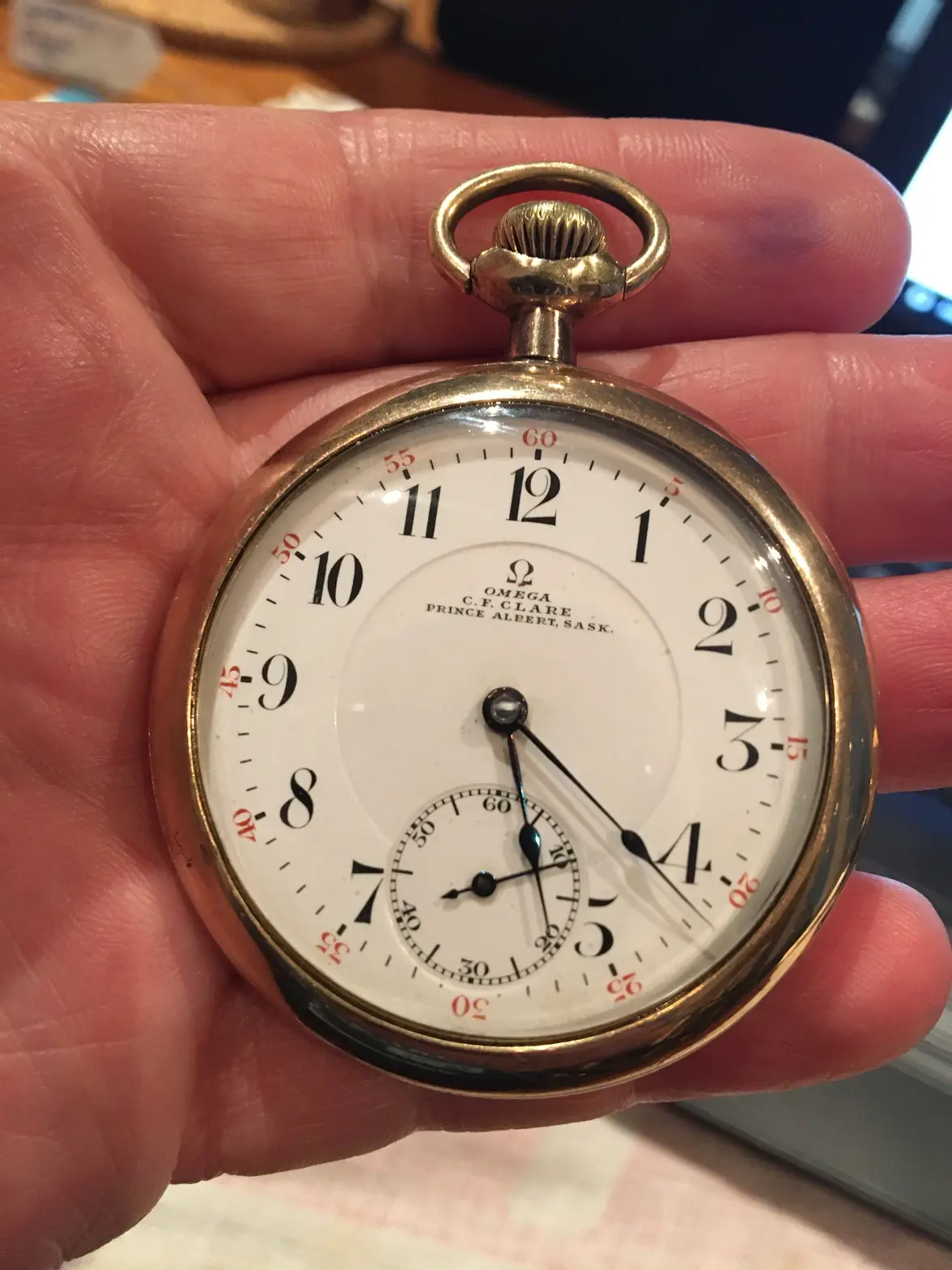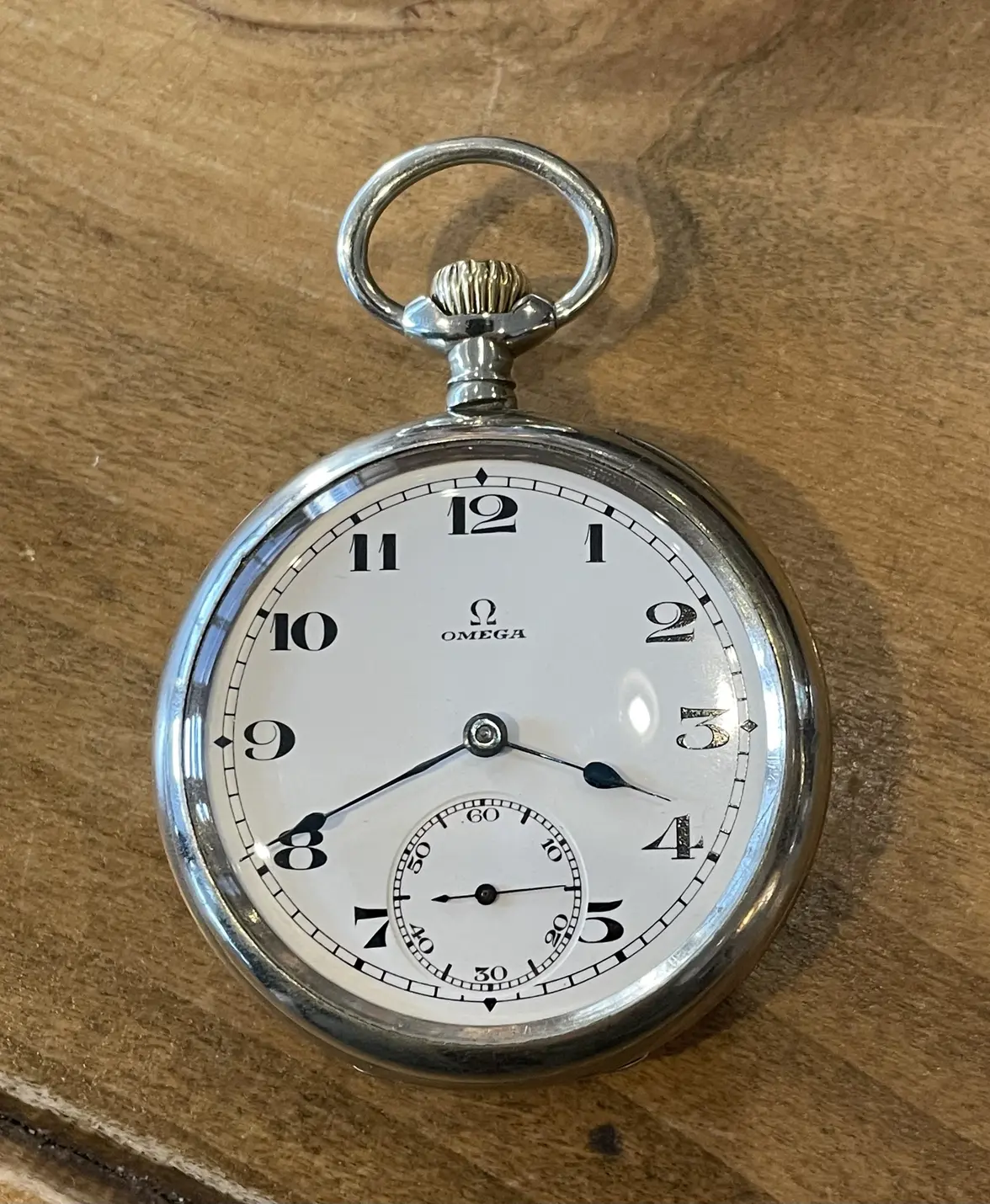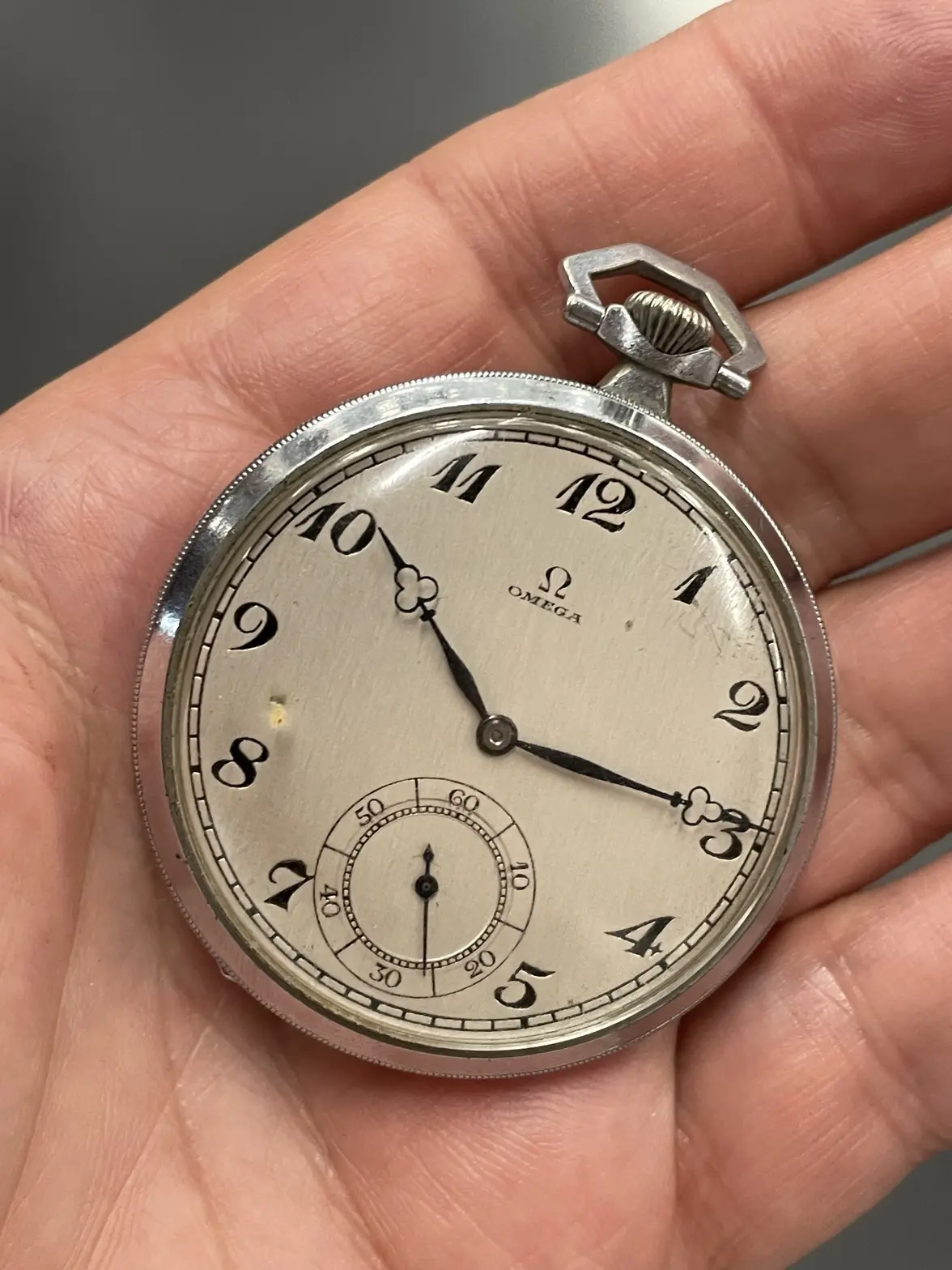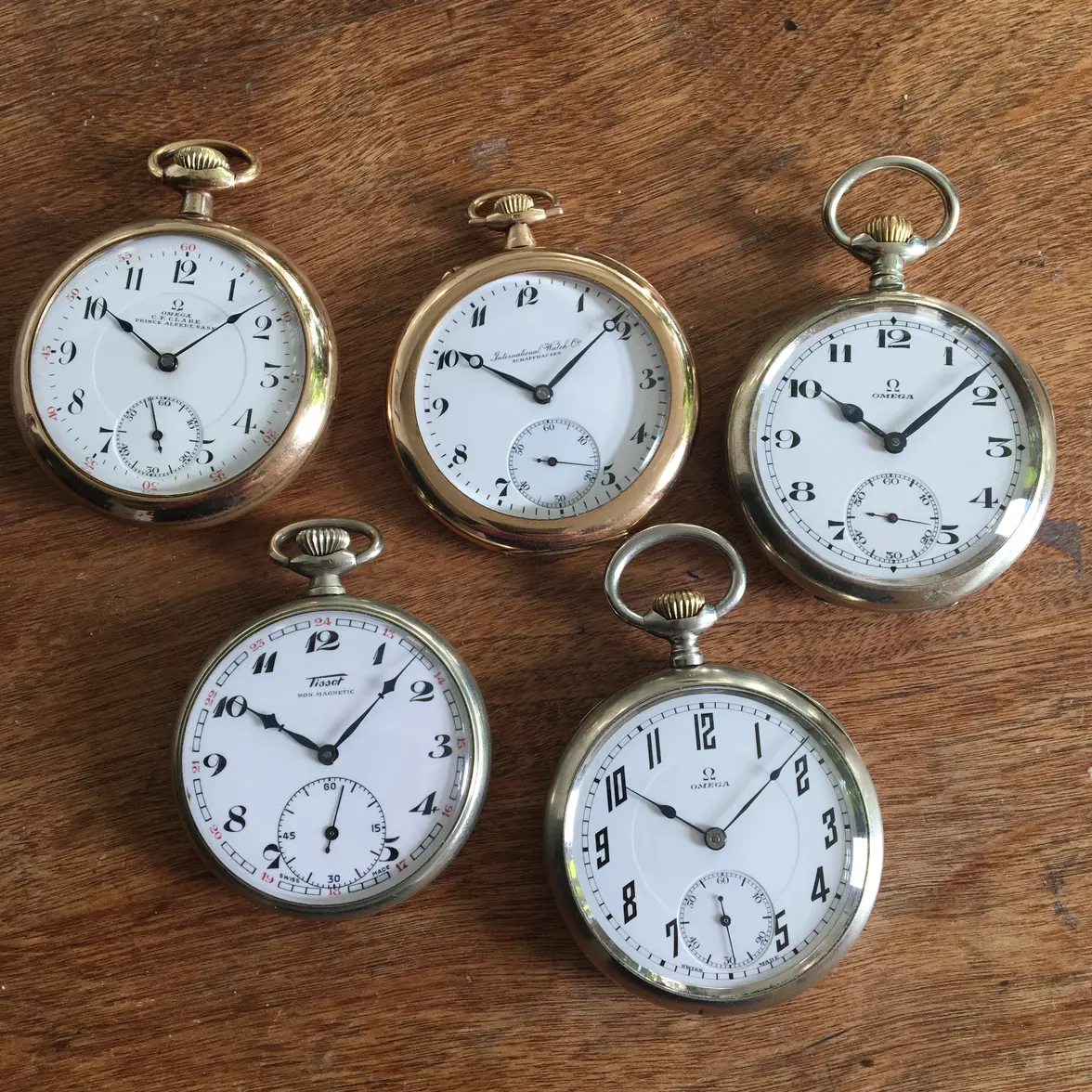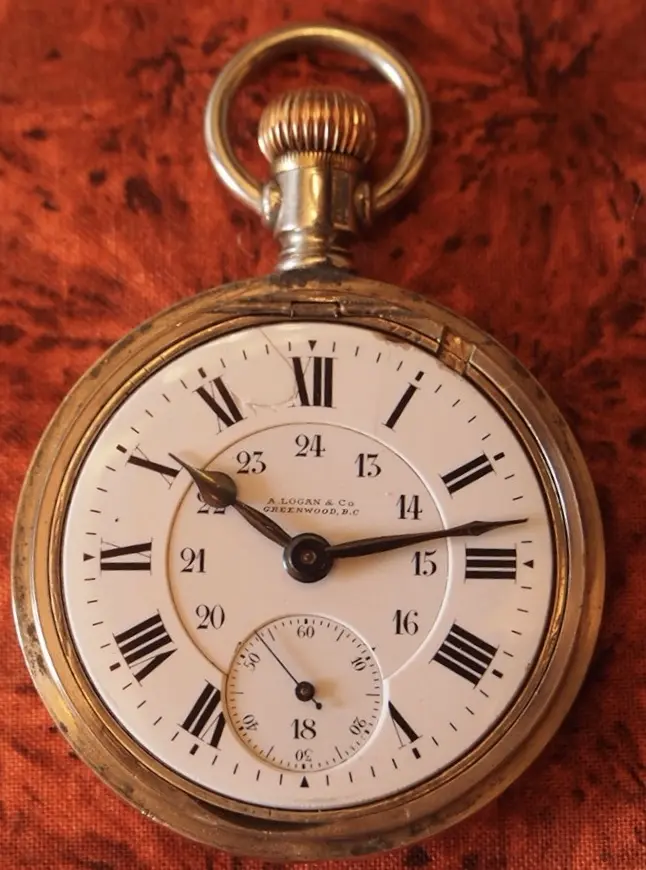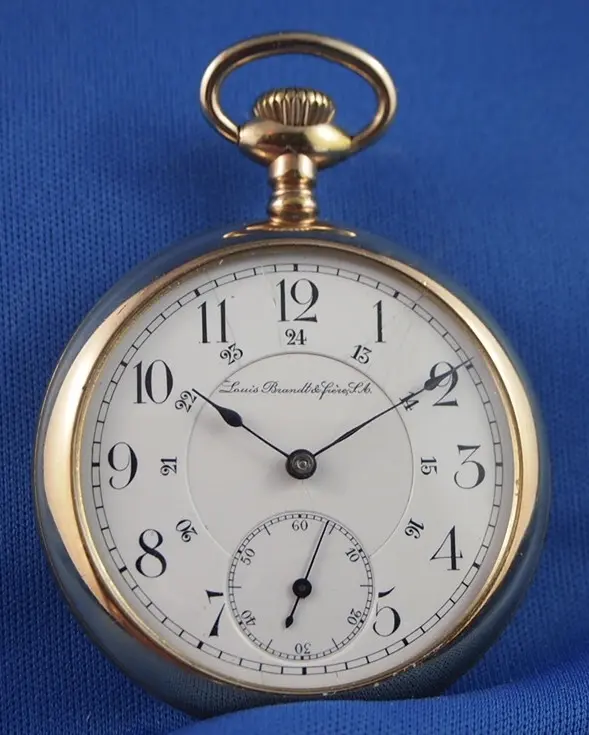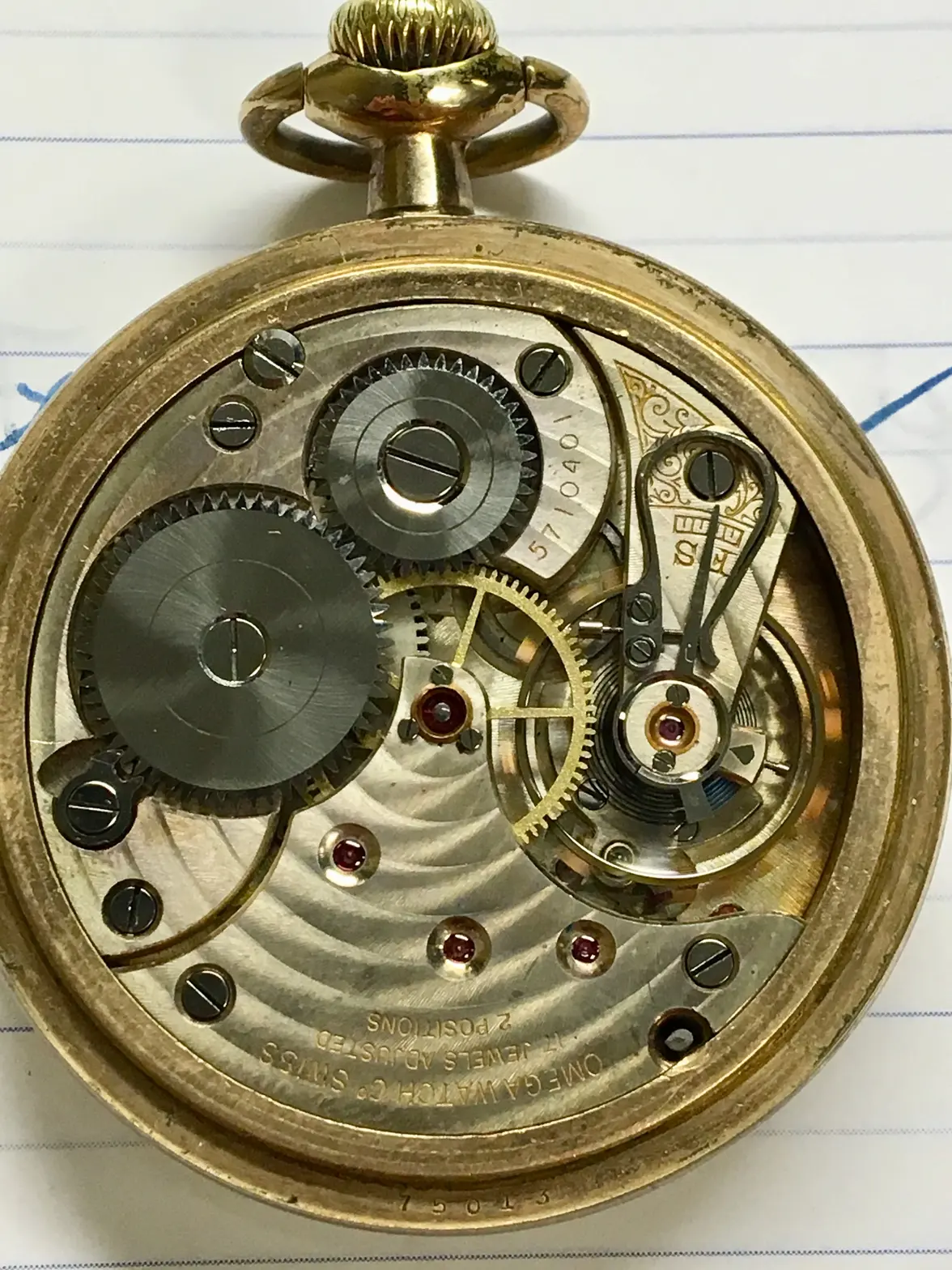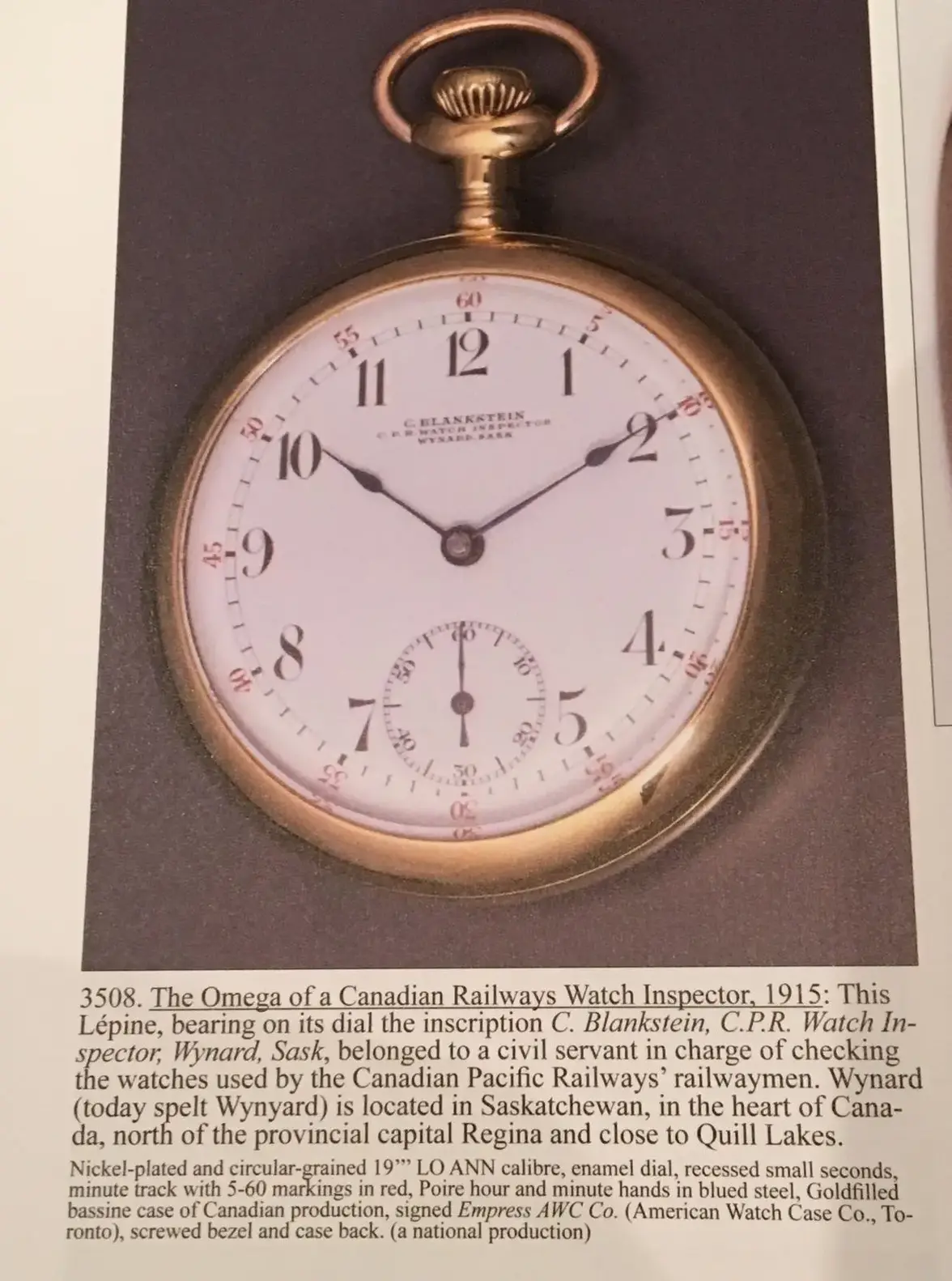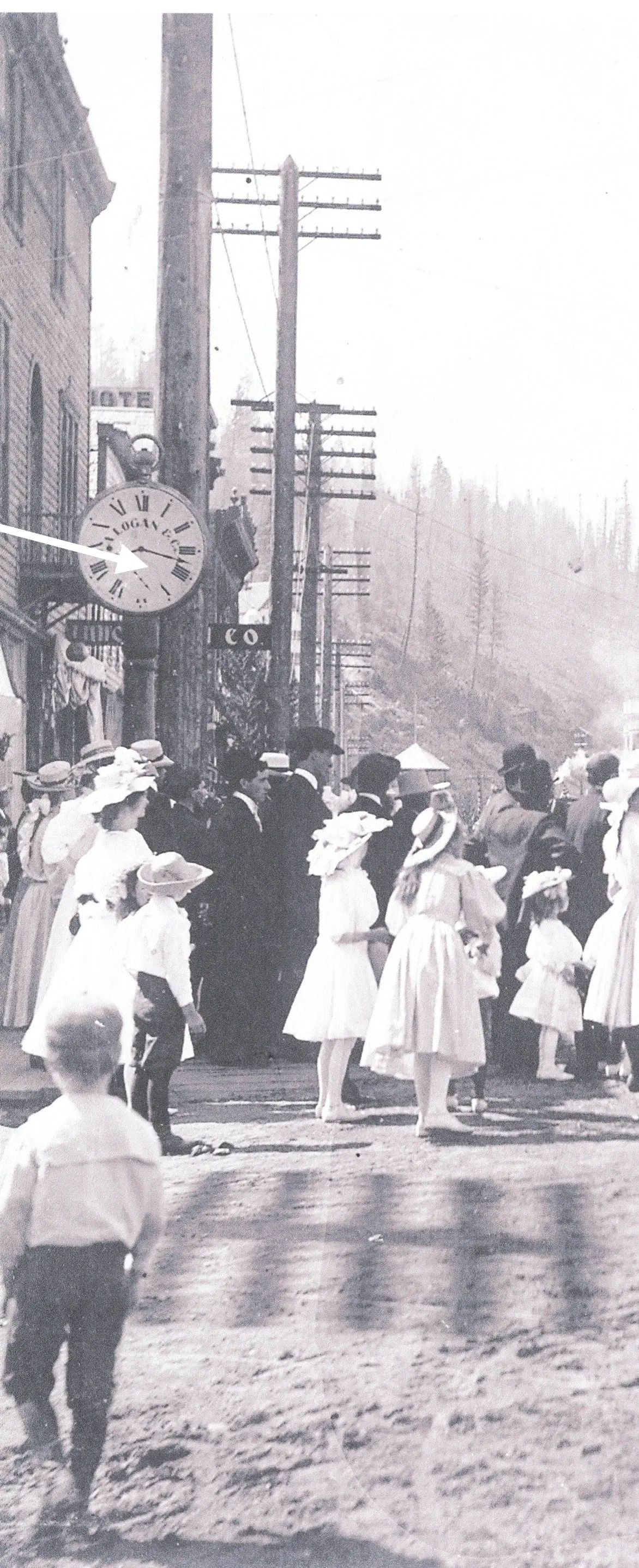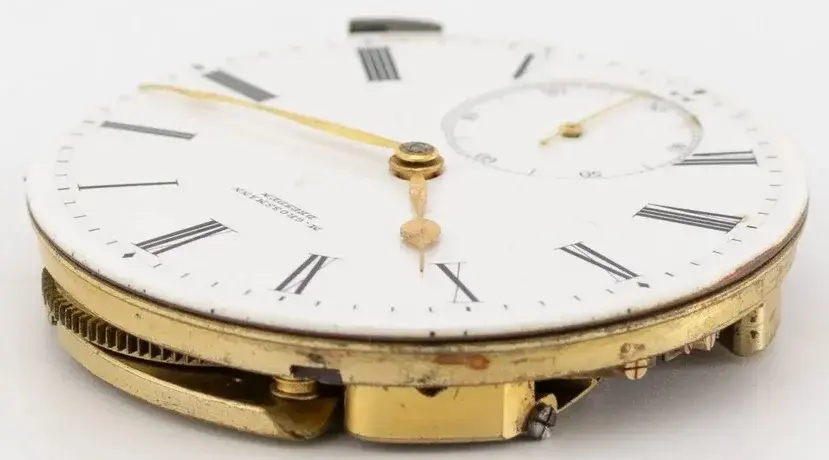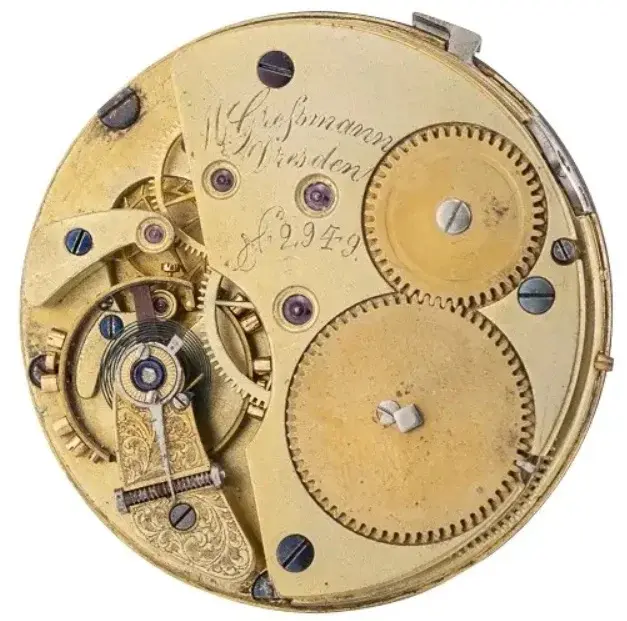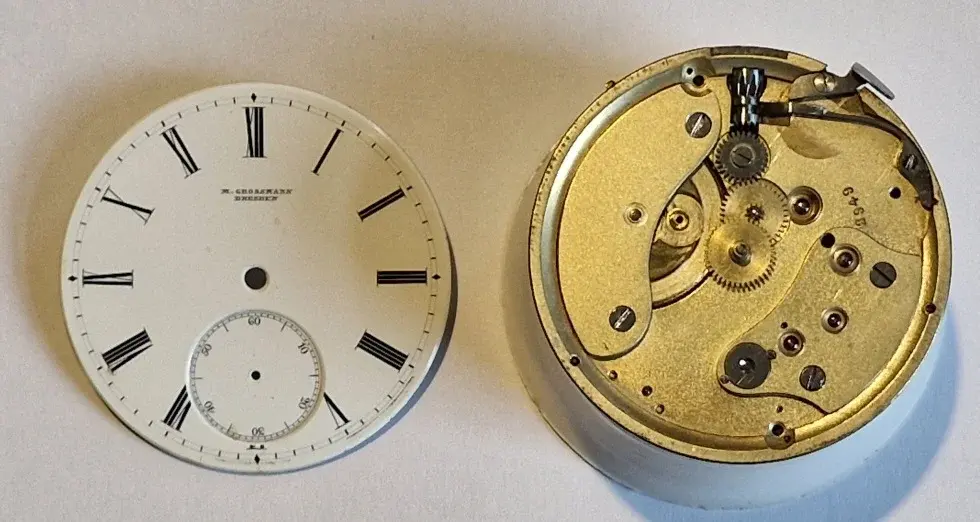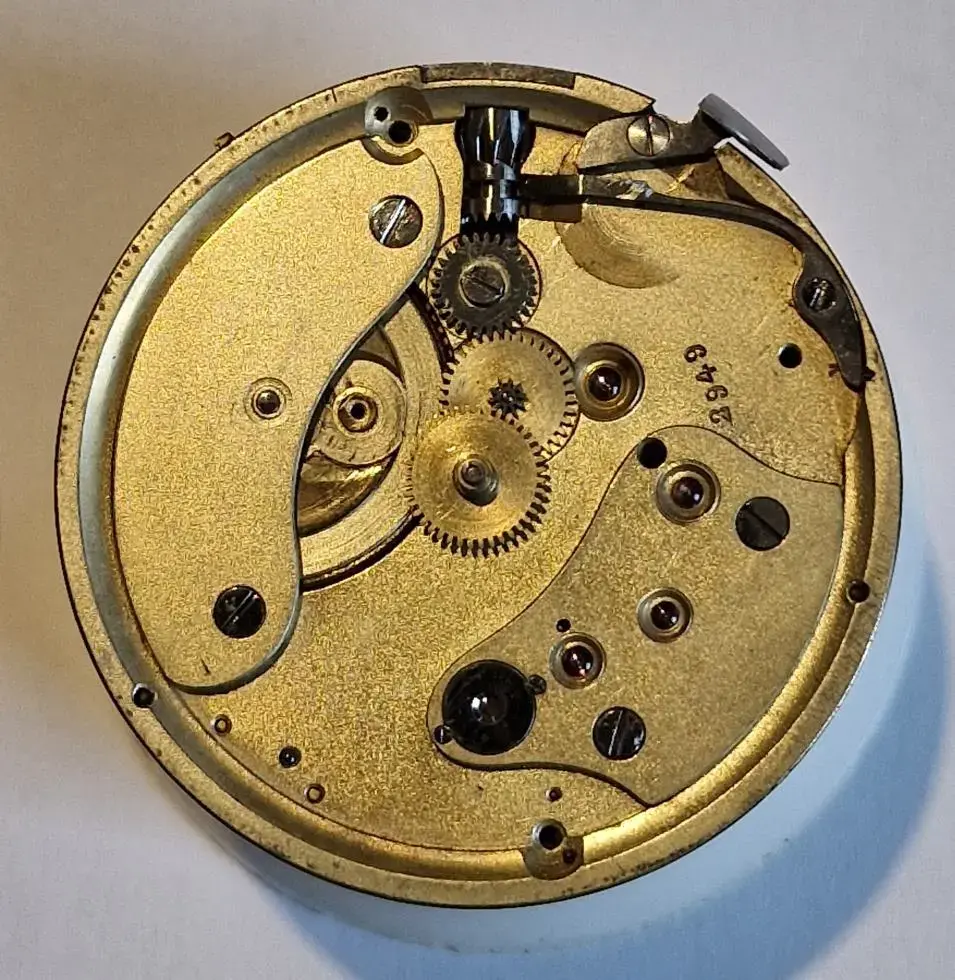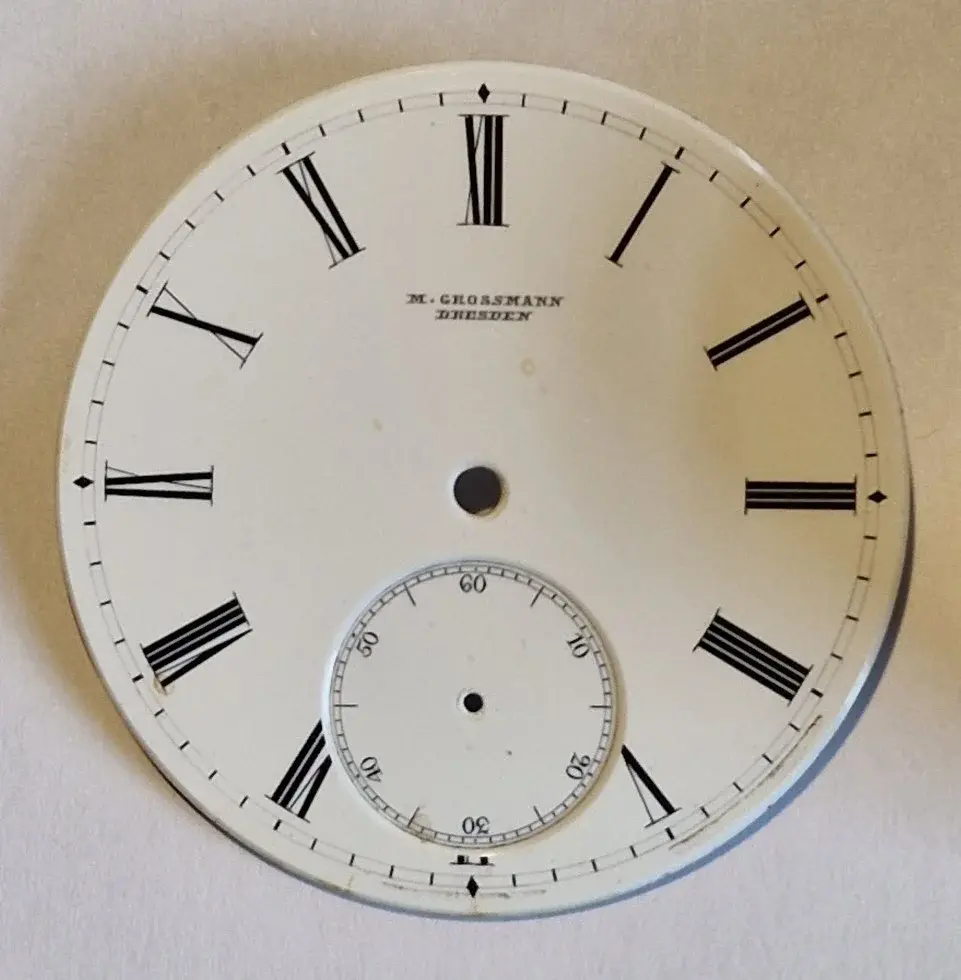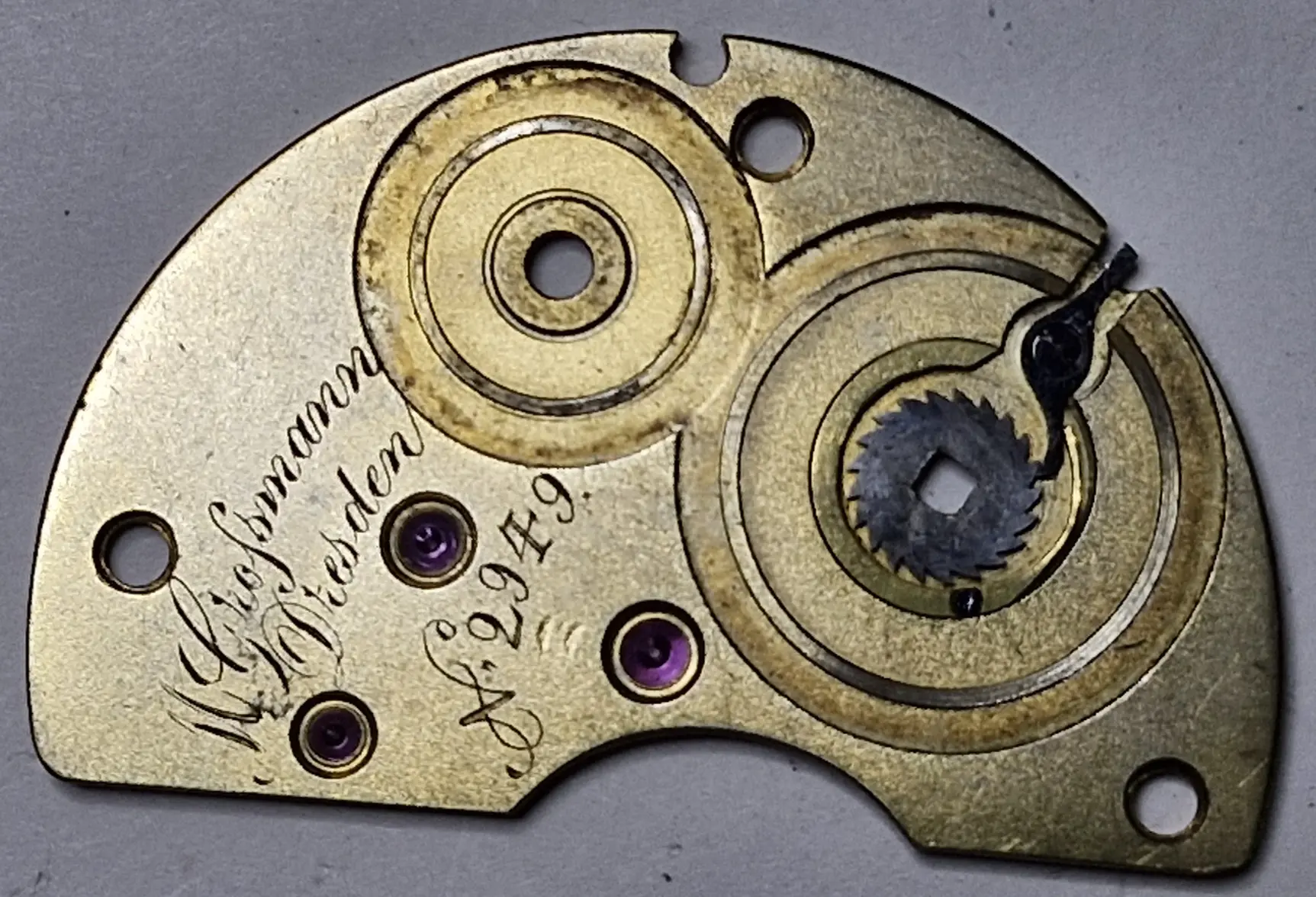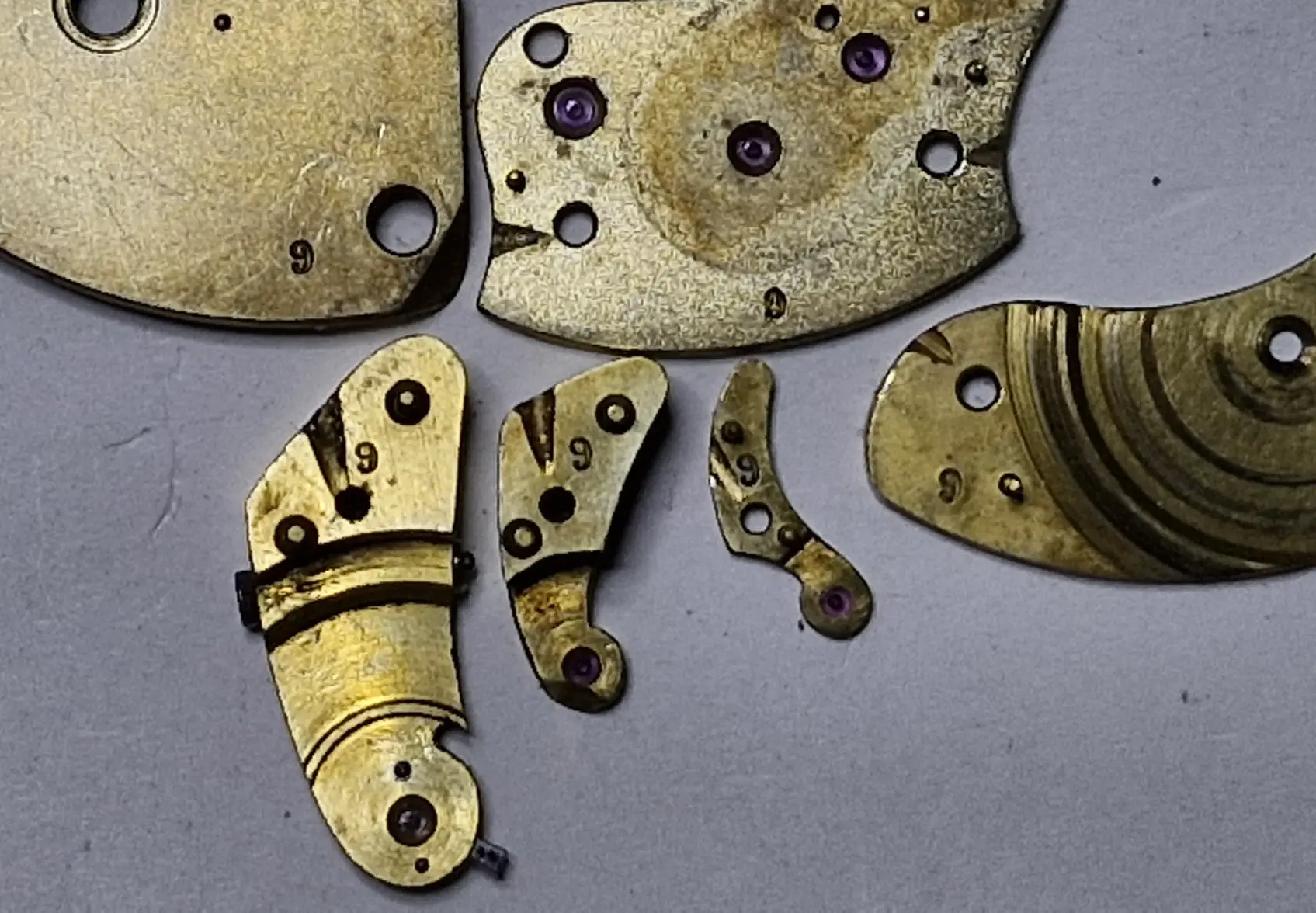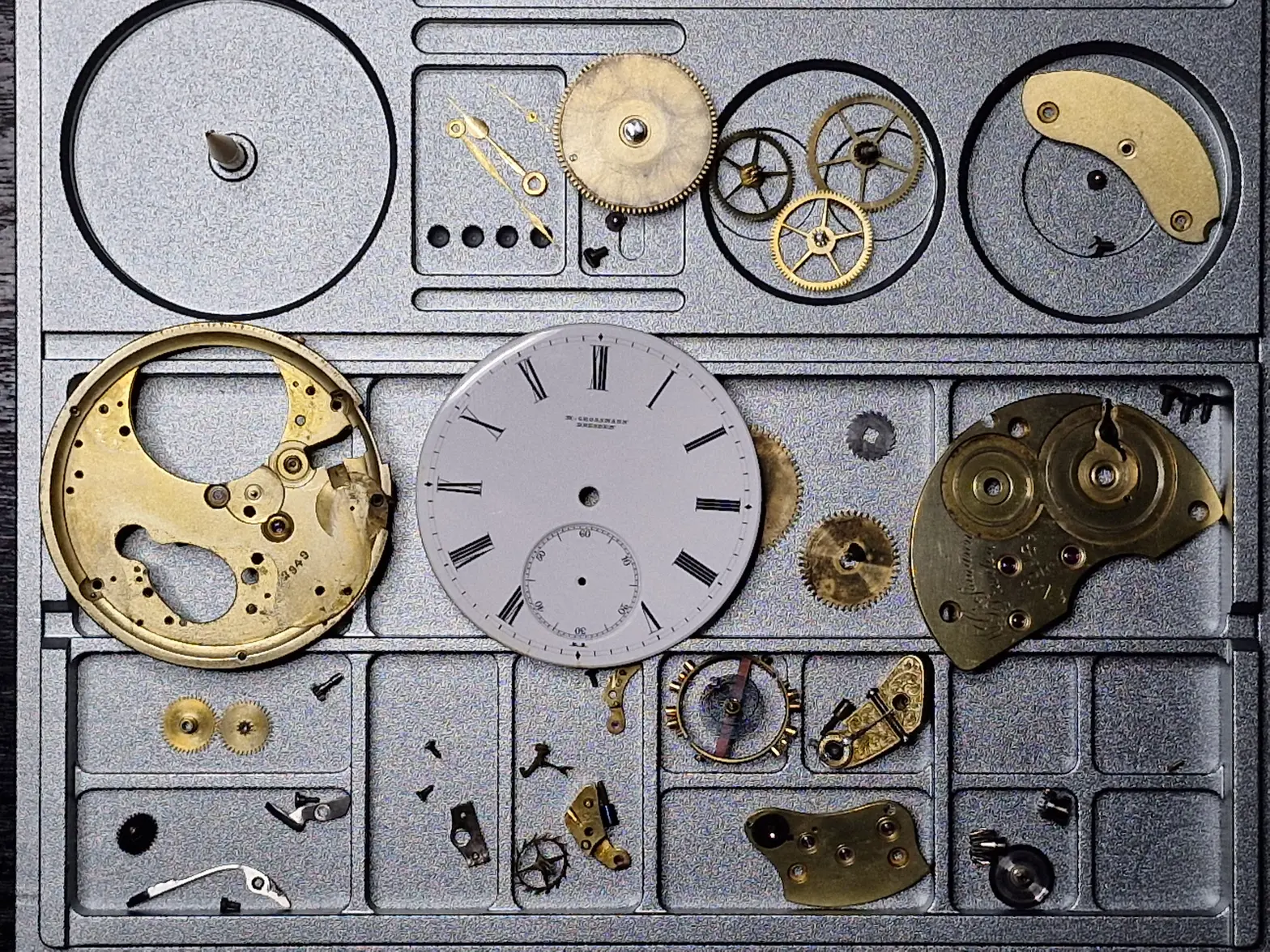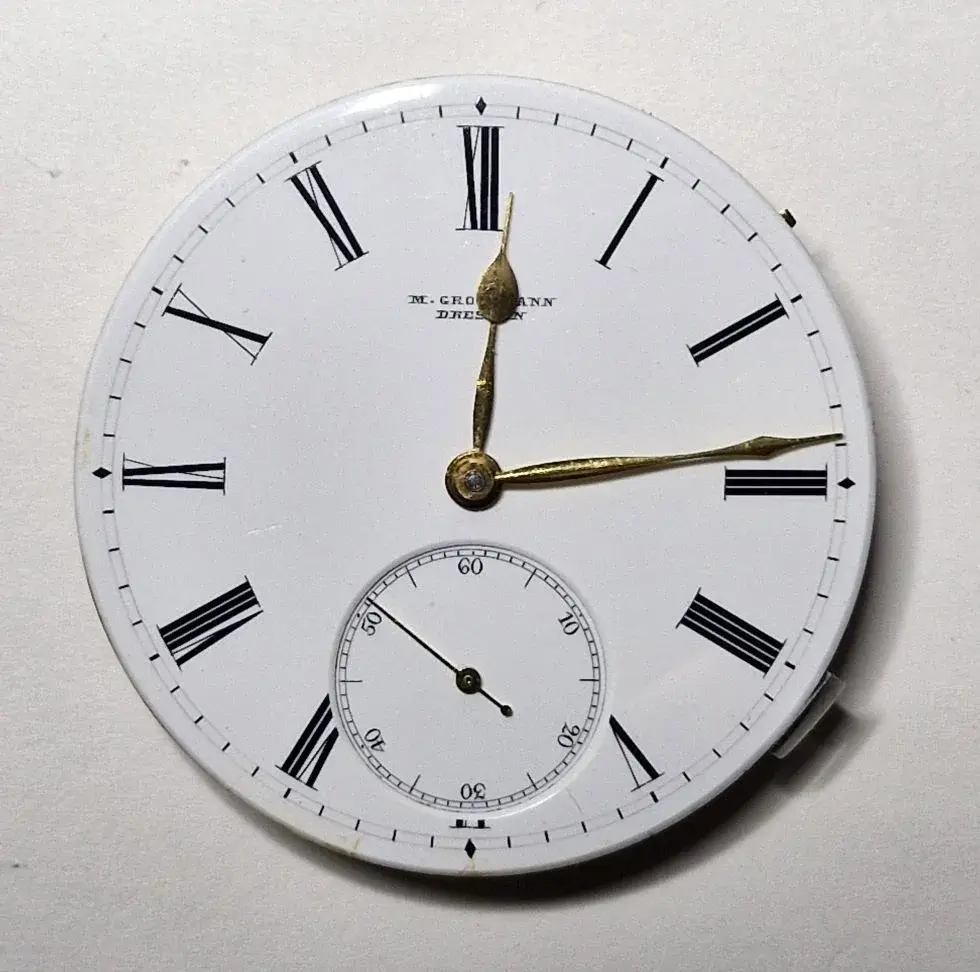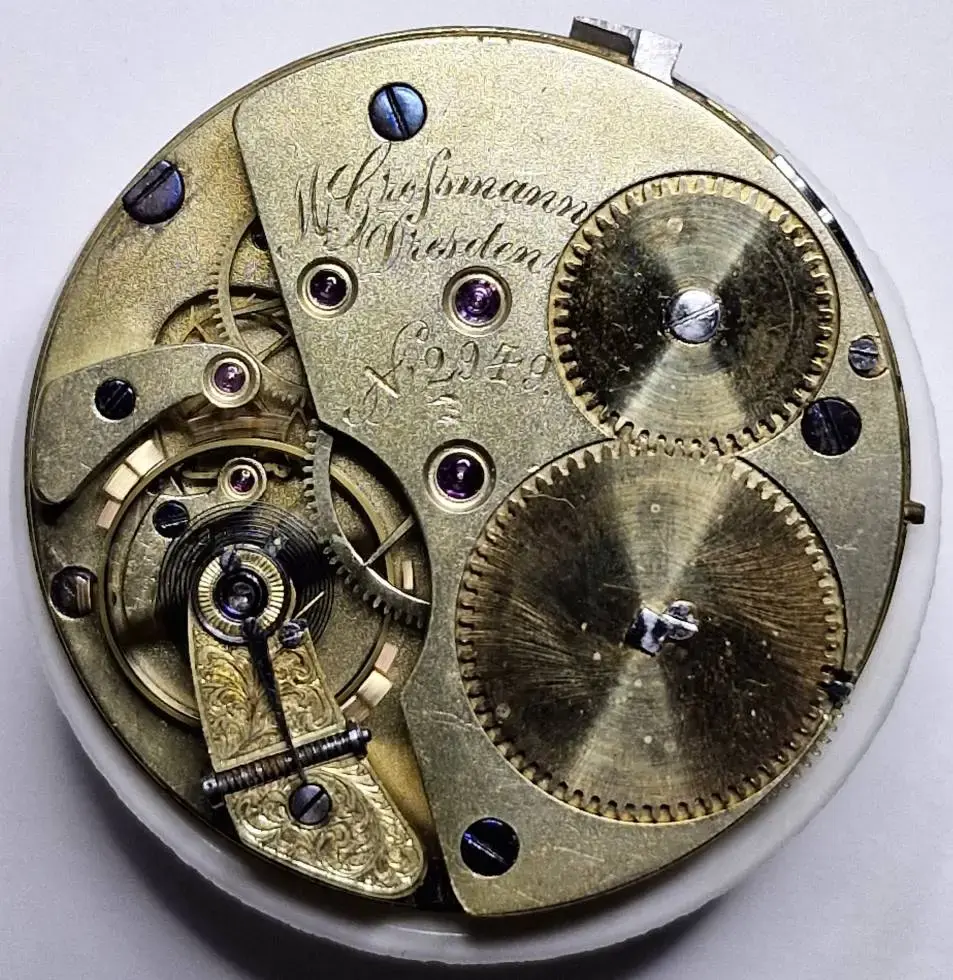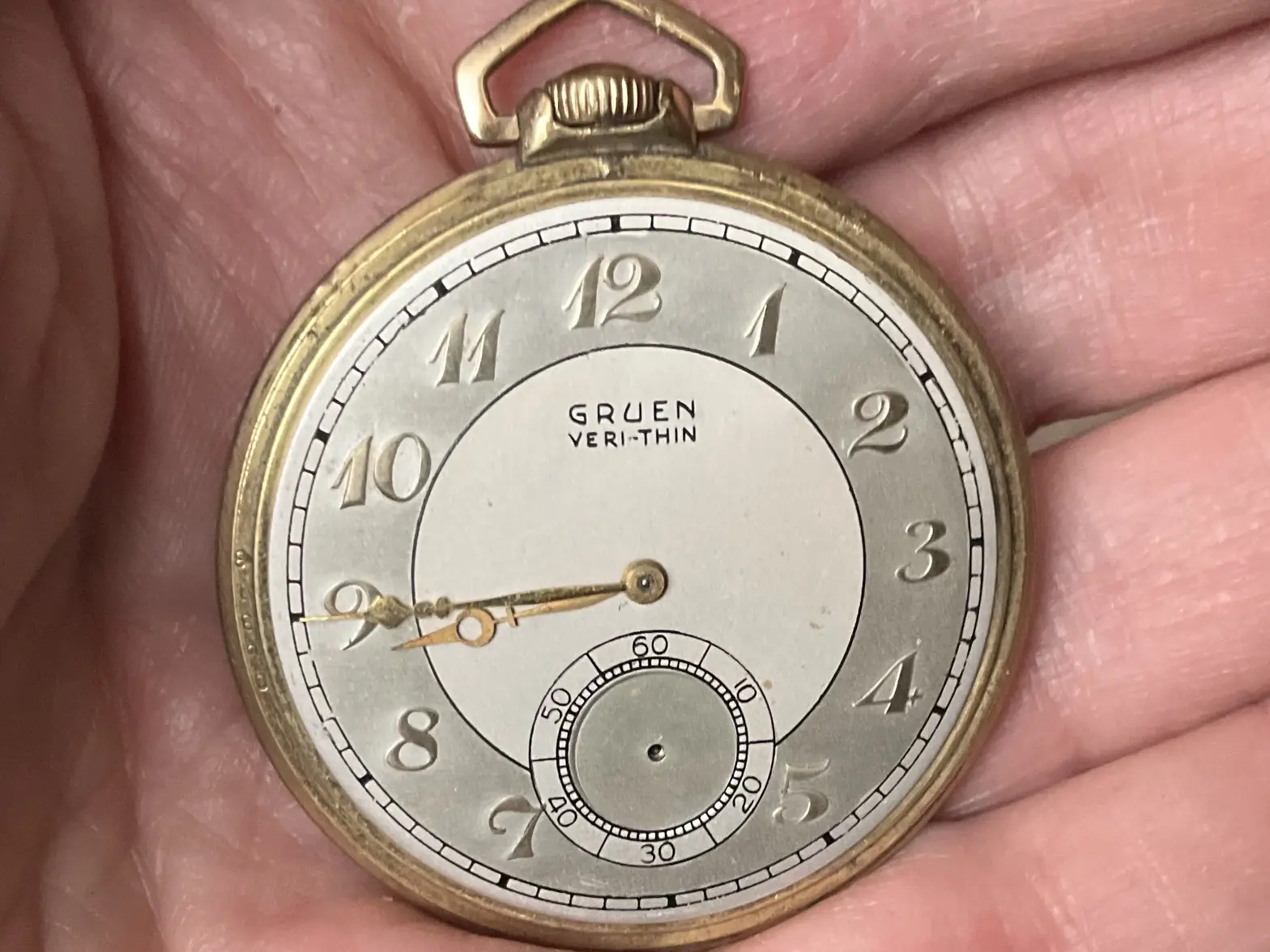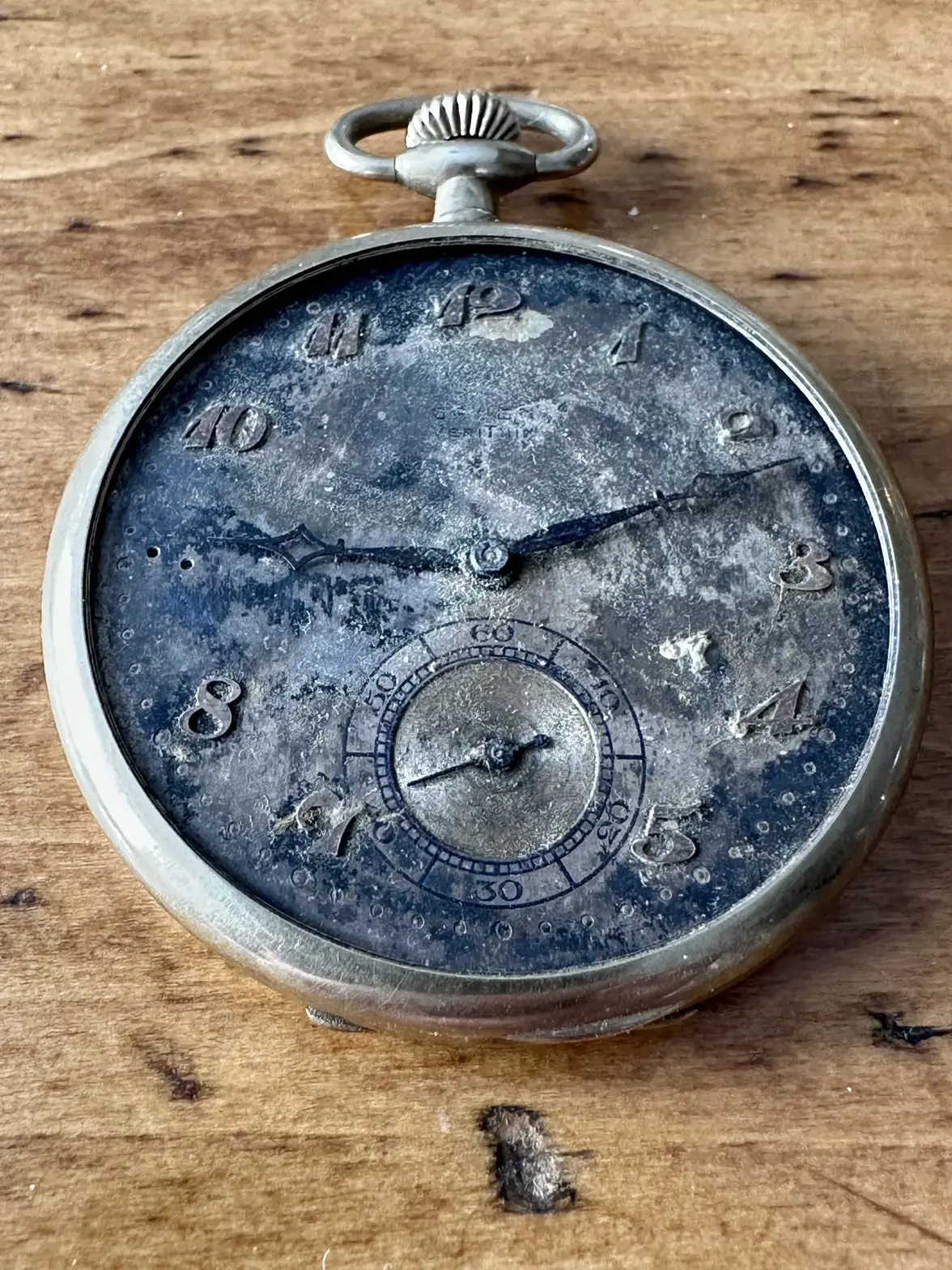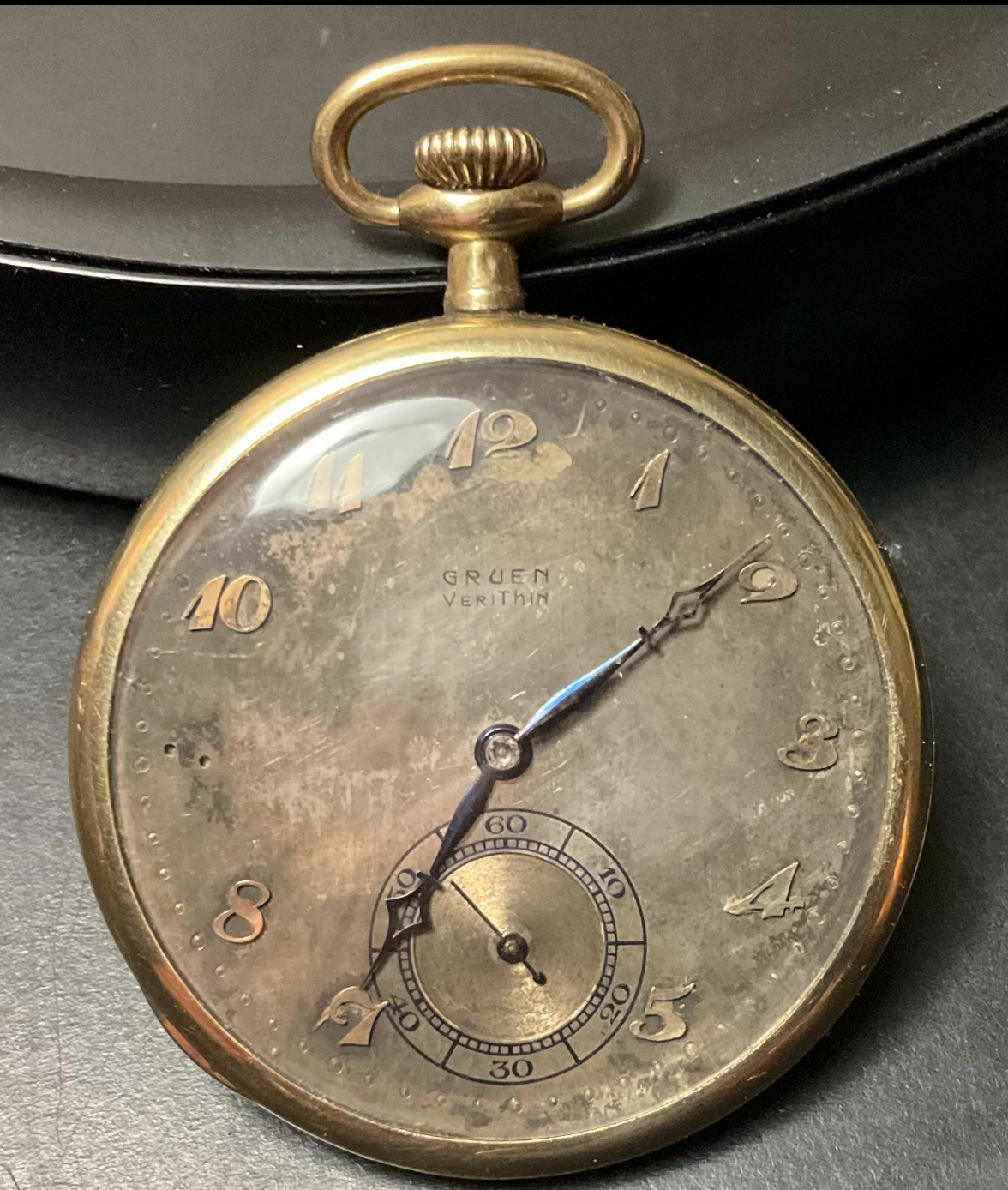I do not normally buy movements, but here I could not resist. It is a Glashütte movement by Grossmann from around 1867, with a pointed-tooth lever escapement. It has some technical features that are typical for early Grossmann watches, for example winding wheel, ratchet wheel, escape wheel and lever made of aluminum bronze, Grossmann fine adjustment, concealed ratchet with its own ratchet wheel under the large “ratchet wheel”. All cocks and bridges bear a “9” hallmark on the underside, the final digit of the serial number. The condition is flawless, the dial is perfect, the hands are original, only the winding stem is missing. Early Grossmann watches were still signed “Dresden”. Later Grossmann watches were then signed “Glashütte” and had the usual three-quarter plate and Glashütte escapement.
I will give the movement a service, make the missing winding stem and then see if I can find a suitable case.
Copyright first two photos: Dr. Crott Auktionen, the other ones are by myself.


